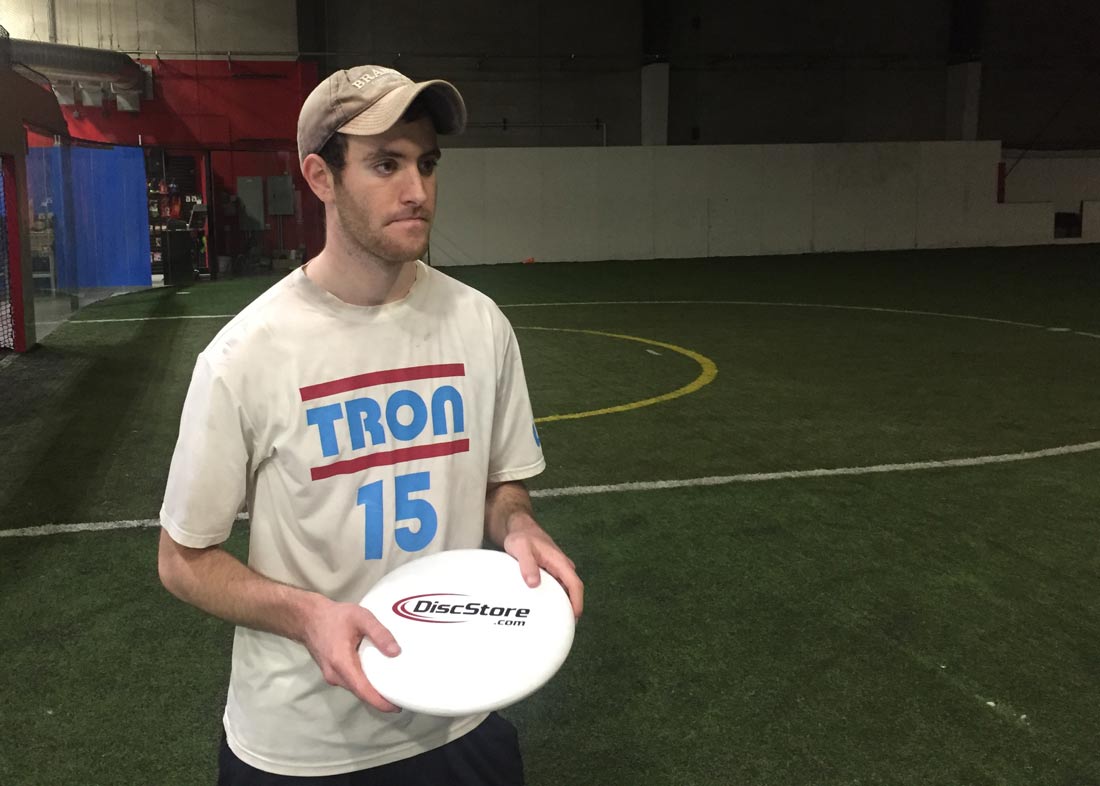By Elan Kane
It’s 1:15 a.m. and I’m at an indoor turf facility somewhere in southwest Chicago.
I’m in a huddle surrounded by 35 other ultimate Frisbee players, vying for a spot on Chicago’s professional ultimate Frisbee team.
The head coach holds up his clipboard, showing a blank sheet of paper.
“This is the current roster,” he said. “You have 45 minutes to earn your spot.”
Forget writing about sports. I’m going to become a professional athlete.
The Chicago Wildfire, a team in the American Ultimate Disc League (AUDL), held tryouts for its 2017 team in January at the Chicago Indoor Sports Arena. Since second grade, it has been my dream to be a professional baseball player, but I figured professional ultimate Frisbee player would do just fine.
To many, ultimate Frisbee is a game reserved for Grateful Dead fans and people not athletic enough to make the basketball team. That could not be further from the truth.
Ultimate Frisbee, or simply ultimate, is a fast-growing sport. Created in 1968 in Maplewood, New Jersey, it is now played in “more than 80 countries, by an estimated 7 million men and women, girls and boys,” according to USA Ultimate, the sport’s governing body.
I started playing competitive ultimate at summer camp in 2007. Each summer from 2007 to 2010, I trained two hours each day for eight weeks just to play one game against a rival summer camp at the end of the session. I quickly fell in love with the sport.
My passion led to me creating a team at my high school. I continued playing at Brandeis University, where my team twice placed second in the Division III College Championships.
As a graduate student at Northwestern University this year, I was eligible to play a fifth season of ultimate for the school’s club team (the sport is not an official NCAA sport yet). In mid-December, I learned that the local Chicago professional team would be holding tryouts.
I almost didn’t go, but Joe Maddon changed my mind. I had attended the Cubs fan convention all weekend and heard Maddon tell a packed ballroom that this year he would try to make players feel uncomfortable. Only then could the team grow.
I knew I would be tired and probably outmatched at the tryout. I felt excited about the possibility of making the team, but mostly nervous not to mess up. I also knew if I were to take the next step in my ultimate career, I had to put myself in an uncomfortable situation.
The tryouts lasted three hours, from 11 p.m. to 2 a.m. Roughly 45 people attended the first tryout, which consisted of drills and scrimmages aimed to test skills and athleticism. I had been to team tryouts before, and this one did not feel much different. I warmed up, heard speeches from clipboard-holding members of the tryout committee, and played with the knowledge that every move would be analyzed.
The first drill involved throwing a disc while others tried to block it. I completed the first pass and knew then that I could compete. In the next few drills, we defended receivers in open space and caught the disc in the air against other players. As I caught a pass over the top of a fellow tryout – “skying,” in ultimate lingo – I heard cheers and yelling from the sideline. I had made my presence known.
I left feeling sore and exhausted, but also cautiously optimistic I played well enough to earn an invitation to the second tryout, and I did.
The second tryout did not go as well.
I found myself running out of breath constantly and making uncharacteristic mistakes. Call it nerves or whatever, but I did not play well.
Each drill worked up to the final five-on-five scrimmage. I failed to get open on a number of plays and was responsible for too many turnovers. I left that tryout, the last before roster decisions were made, convinced that my name wouldn’t appear on the coach’s roster.
Three days later, I received an email.
“Congratulations, you’ve been selected to be part of the 2017 Chicago Wildfire as either a rostered player or a reserve player.”
I teared up as I texted my mom with the news. I never thought I would reach this level with the sport I started playing at summer camp.
Let’s not get ahead of ourselves. Players make between $25 and $100 per game and attendance averages between 400 and 500 people. The league pays for travel, uniforms and other costs, but no one is quitting their day job to be a professional ultimate player. Yet.
Founded in 2012, the AUDL now has 24 teams and “hosts 168 regular season games across four divisions,” according to the league’s website.
League commissioner Steve Gordon said he thinks the league will eventually fall right below the top five sports – basketball, baseball, football, hockey and soccer.
“We think that the infrastructure of the game,” Gordon said, “all the benefits, the low costs – this gives us a chance to be played by kids of every socioeconomic level which provides a lot of growth opportunity and we believe that we’re going to see an explosion between now and the next five years.”
Whatever direction the sport takes moving forward, I can’t wait to be a part of it.
Mom, I’m a professional athlete.


